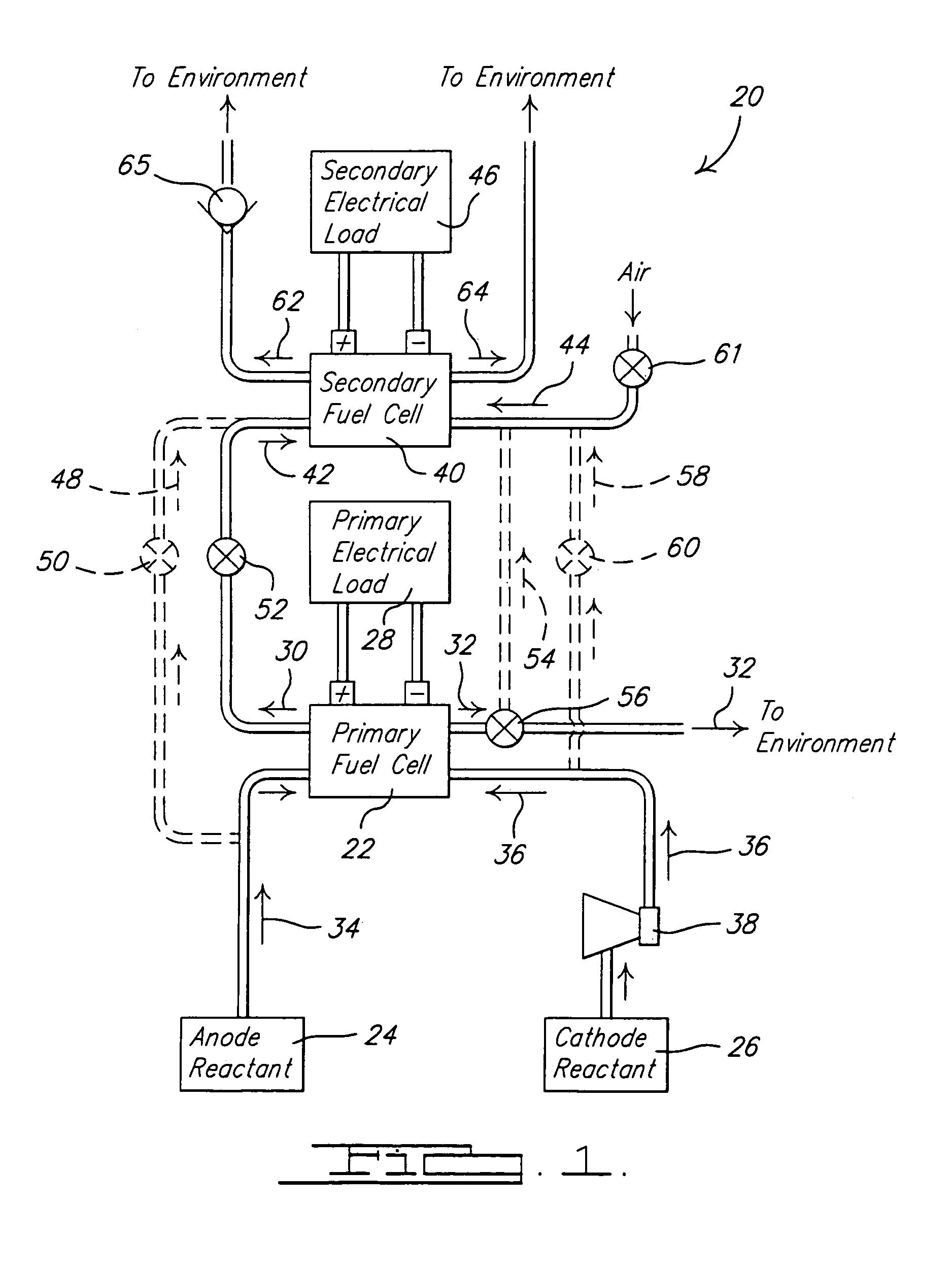Fuel cell H2 exhaust conversion
a fuel cell and exhaust technology, applied in the field of fuel cell systems, can solve the problems of increasing the complexity of the fuel cell system incorporating the tail gas combustor, reducing the efficiency of the conversion of excess hydrogen to heat, so as to achieve no excess combustion heat or emissions, and minimal controls
- Summary
- Abstract
- Description
- Claims
- Application Information
AI Technical Summary
Benefits of technology
Problems solved by technology
Method used
Image
Examples
Embodiment Construction
[0012]The following description of the preferred embodiments is merely exemplary in nature and is in no way intended to limit the invention, its application, or uses.
[0013]Referring to FIG. 1, a fuel cell system 20 in accordance with the principles of the present invention is shown. The fuel cell system 20 has a primary fuel cell 22 that converts an anode reactant 24 and a cathode reactant 26 into electricity to power a primary electrical load 28. The primary electrical load 28 can take a variety of forms depending upon the application within which the fuel cell system 20 is employed. For example, the primary electrical load 28 can be electric motors that are used to propel a vehicle, or other apparatuses that require an electrical current to be operated. The process of converting the anode reactant 24 and the cathode reactant 26 into electricity also produces an anode effluent 30 and a cathode effluent 32 that are exhausted from the primary fuel cell 22. The anode reactant 24 is a ...
PUM
| Property | Measurement | Unit |
|---|---|---|
| power | aaaaa | aaaaa |
| hydrogen concentration | aaaaa | aaaaa |
| concentration | aaaaa | aaaaa |
Abstract
Description
Claims
Application Information
 Login to View More
Login to View More - R&D
- Intellectual Property
- Life Sciences
- Materials
- Tech Scout
- Unparalleled Data Quality
- Higher Quality Content
- 60% Fewer Hallucinations
Browse by: Latest US Patents, China's latest patents, Technical Efficacy Thesaurus, Application Domain, Technology Topic, Popular Technical Reports.
© 2025 PatSnap. All rights reserved.Legal|Privacy policy|Modern Slavery Act Transparency Statement|Sitemap|About US| Contact US: help@patsnap.com


